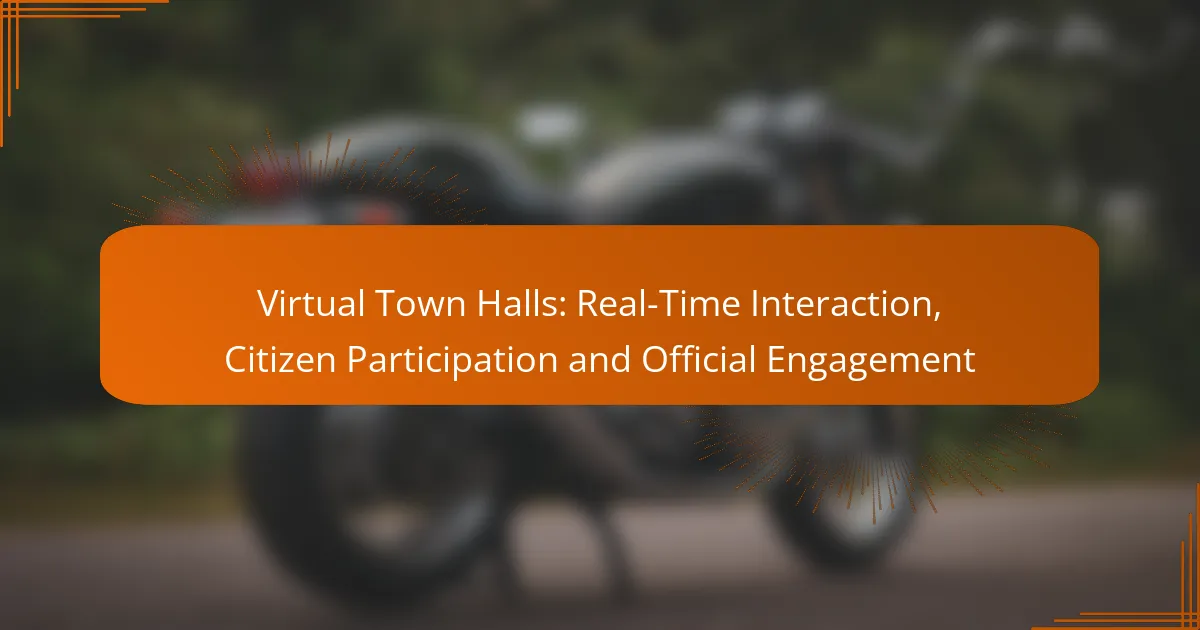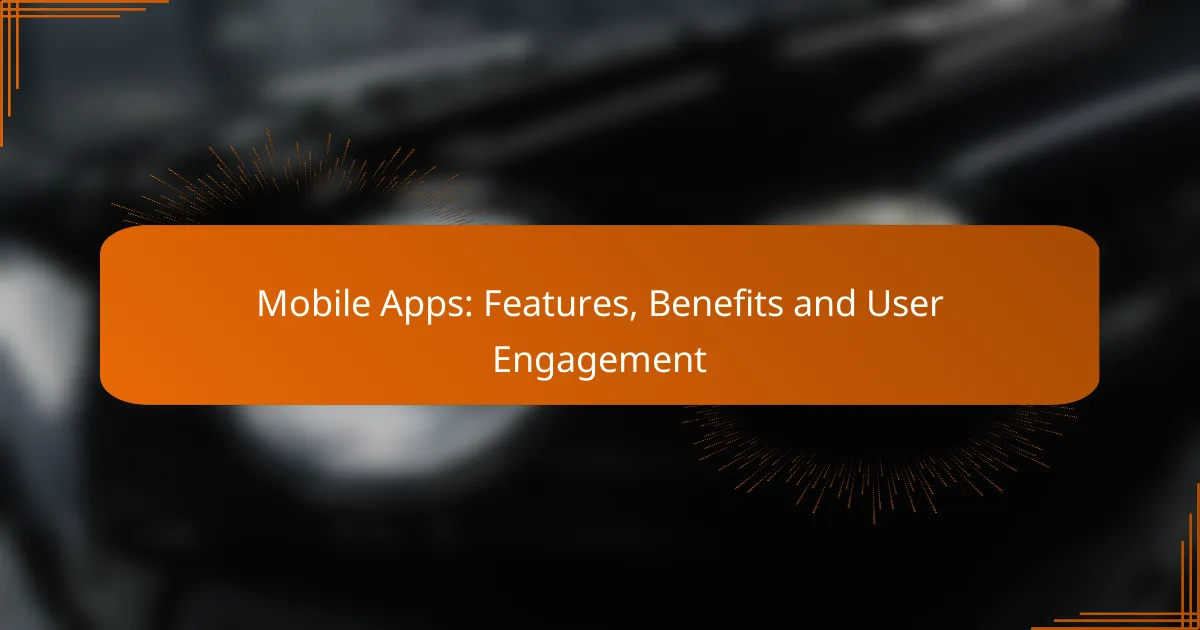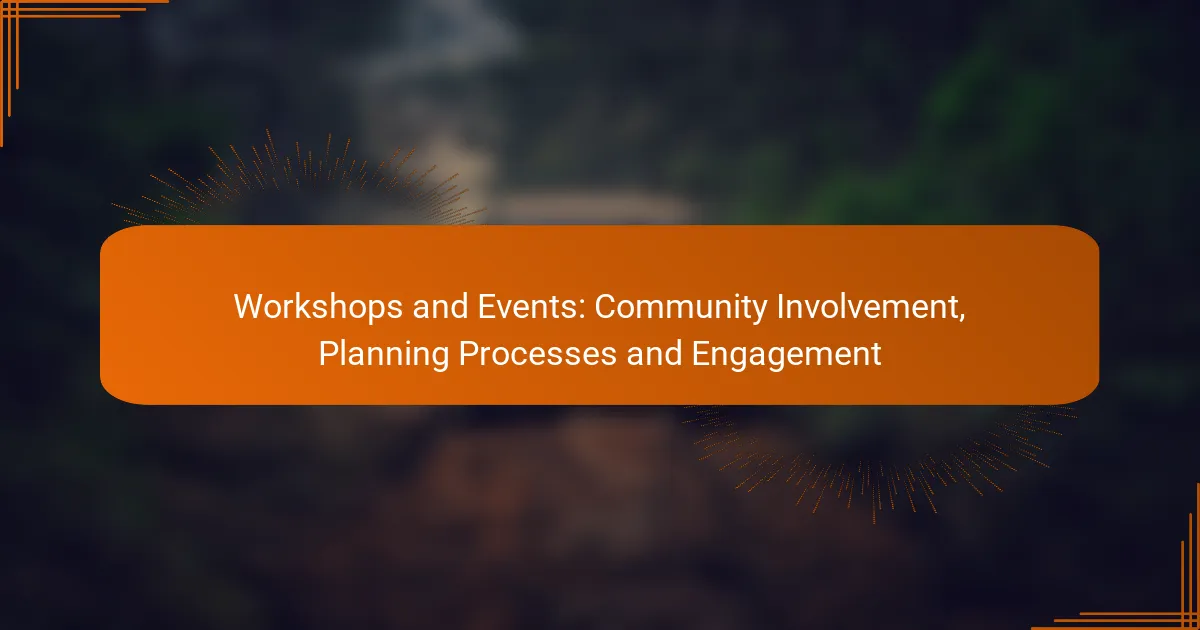Virtual town halls play a crucial role in enhancing citizen engagement by enabling real-time interaction between community members and officials. These platforms not only allow citizens to express their opinions and concerns directly to decision-makers but also utilize various technologies to facilitate effective communication and participation.
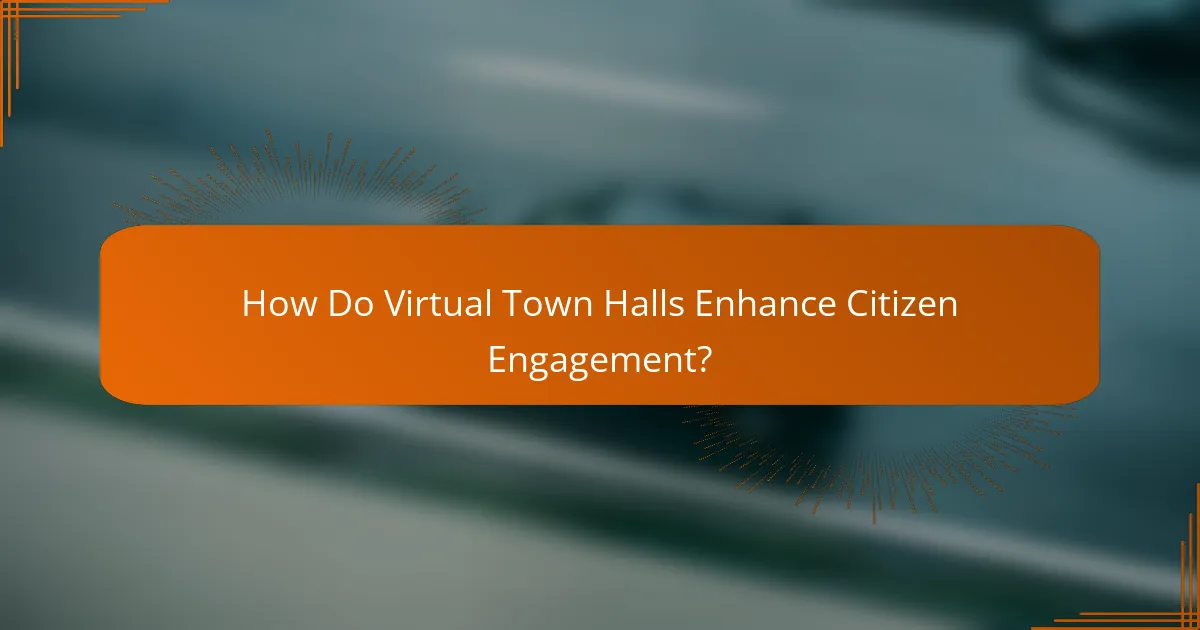
How Do Virtual Town Halls Enhance Citizen Engagement?
Virtual town halls significantly enhance citizen engagement by providing a platform for real-time interaction between officials and community members. These events foster a sense of inclusion, allowing citizens to voice their opinions and concerns directly to decision-makers.
Real-time feedback mechanisms
Real-time feedback mechanisms enable participants to express their views instantly during virtual town halls. Tools like live polls and surveys can gauge public sentiment on specific issues, allowing officials to adjust their responses and policies accordingly.
For example, a city council might use a live poll to determine community priorities, enabling them to focus on the most pressing concerns. This immediate feedback loop strengthens the connection between citizens and their representatives.
Increased accessibility for diverse populations
Virtual town halls increase accessibility for diverse populations by removing geographical barriers and accommodating various schedules. Individuals who may have difficulty attending in-person meetings, such as those with disabilities or those living in remote areas, can participate more easily.
Offering sessions in multiple languages or providing closed captioning can further enhance inclusivity, ensuring that all community members have the opportunity to engage meaningfully.
Interactive Q&A sessions
Interactive Q&A sessions allow citizens to ask questions directly to officials, fostering transparency and accountability. These sessions can be structured to prioritize questions based on community interest, ensuring that the most relevant topics are addressed.
Using a moderated chat feature can help manage the flow of questions and keep discussions focused. This format not only empowers citizens but also helps officials understand the community’s concerns in real time.
Community-driven agenda setting
Community-driven agenda setting allows citizens to influence the topics discussed during virtual town halls. By soliciting input on the agenda beforehand, officials can ensure that the issues most important to the community are prioritized.
Methods such as online suggestion boxes or pre-event surveys can be effective in gathering input. This approach promotes a sense of ownership among citizens, as they see their concerns reflected in the meeting’s agenda.
Use of social media integration
Integrating social media into virtual town halls can amplify engagement by reaching a broader audience. Platforms like Facebook and Twitter can be used to promote events, share updates, and encourage participation, especially among younger demographics.
Live streaming the town hall on social media can also allow for real-time comments and interactions, further enhancing the dialogue between officials and citizens. This multi-channel approach ensures that more voices are heard and considered in local governance.
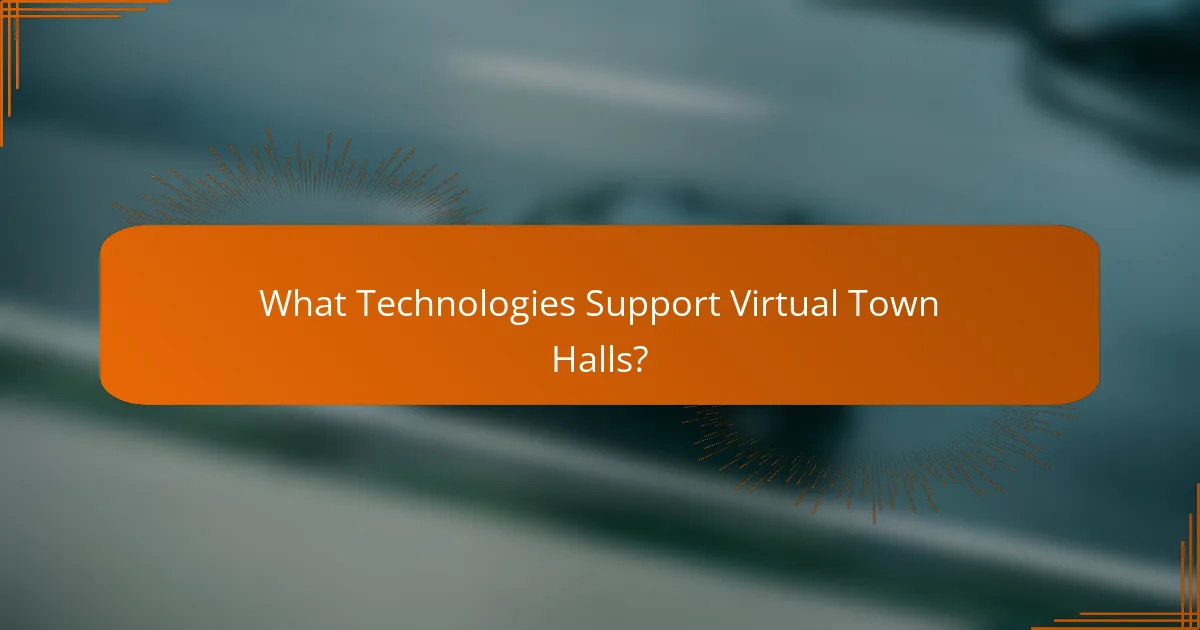
What Technologies Support Virtual Town Halls?
Virtual town halls rely on various technologies to facilitate real-time interaction, citizen participation, and official engagement. Key technologies include video conferencing platforms, polling tools, live streaming services, and engagement analytics software, each serving distinct yet complementary roles in enhancing communication and participation.
Video conferencing platforms like Zoom
Video conferencing platforms such as Zoom are essential for hosting virtual town halls, allowing participants to join from anywhere with an internet connection. These platforms typically support features like screen sharing, breakout rooms, and chat functions, which enhance interaction during discussions.
When selecting a video conferencing tool, consider factors such as participant capacity, ease of use, and integration capabilities with other software. For example, Zoom can accommodate hundreds of participants, making it suitable for larger town halls, while platforms like Microsoft Teams may offer better integration with organizational tools.
Polling tools such as Slido
Polling tools like Slido enable real-time feedback during virtual town halls, allowing attendees to express their opinions and preferences instantly. These tools can facilitate live polls, Q&A sessions, and surveys, making it easier for officials to gauge public sentiment on various issues.
To effectively use polling tools, prepare questions in advance and ensure they are clear and concise. This approach encourages higher engagement and provides actionable insights. Many platforms allow anonymous responses, which can lead to more honest feedback from participants.
Live streaming services
Live streaming services extend the reach of virtual town halls by broadcasting events to a wider audience beyond those who can join via video conferencing. Platforms like YouTube Live or Facebook Live allow for real-time viewing and interaction through comments and reactions.
When utilizing live streaming, ensure that the chosen platform aligns with your audience’s preferences. Consider the technical requirements, such as internet bandwidth and video quality, to provide a seamless viewing experience. Engaging with viewers through live chat can enhance participation and make the event feel more interactive.
Engagement analytics software
Engagement analytics software tracks participant interaction during virtual town halls, providing valuable insights into attendee behavior and preferences. Tools like Google Analytics or specialized engagement platforms can measure metrics such as attendance rates, participation levels, and feedback trends.
Using analytics effectively involves setting clear goals for what you want to measure, such as engagement rates or question response times. Regularly reviewing these metrics can help improve future town halls by identifying areas for enhancement and ensuring that citizen voices are heard and addressed.
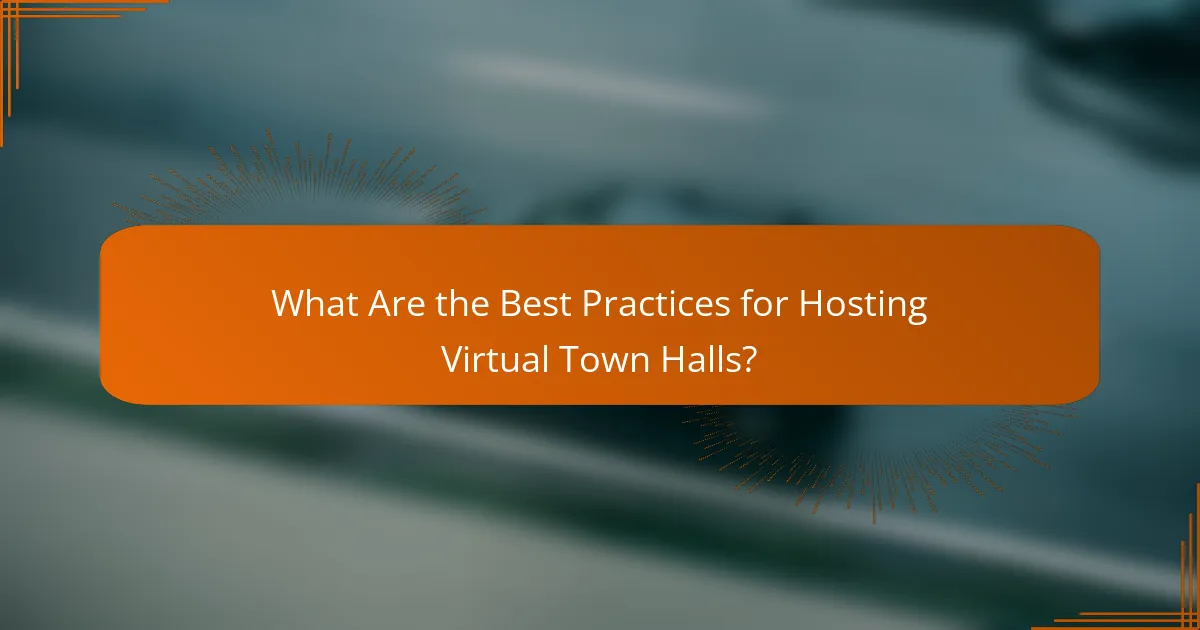
What Are the Best Practices for Hosting Virtual Town Halls?
Hosting effective virtual town halls involves strategic planning, clear communication, and active engagement techniques. By adhering to best practices, organizers can foster meaningful dialogue between officials and citizens.
Clear agenda and objectives
A well-defined agenda is crucial for the success of virtual town halls. It sets the framework for discussion and ensures that all participants understand the topics to be covered. Objectives should be specific, measurable, and relevant to the community’s interests.
For example, an agenda might include time slots for community feedback, updates on local projects, and Q&A sessions. This structure helps keep the event focused and productive.
Effective moderation techniques
Effective moderation is essential to facilitate smooth interactions during virtual town halls. Moderators should encourage participation, manage time, and ensure that all voices are heard, especially those from underrepresented groups.
Techniques such as using a chat feature for questions, employing polls for instant feedback, and actively inviting quieter participants to share their thoughts can enhance engagement. Training moderators in conflict resolution can also help maintain a respectful atmosphere.
Pre-event promotion strategies
Promoting the virtual town hall in advance is key to maximizing attendance and participation. Utilize multiple channels such as social media, local news outlets, and community newsletters to reach a diverse audience.
Consider creating visually appealing flyers or digital graphics that highlight the event’s purpose and agenda. Engaging local influencers or community leaders to spread the word can also boost interest and turnout.
Post-event follow-up processes
Following up after the virtual town hall is important for maintaining momentum and accountability. Share a summary of the event, including key takeaways and action items, with all participants.
Additionally, consider sending out a feedback survey to gather insights on the event’s effectiveness and areas for improvement. This information can inform future town halls and demonstrate that citizen input is valued and acted upon.
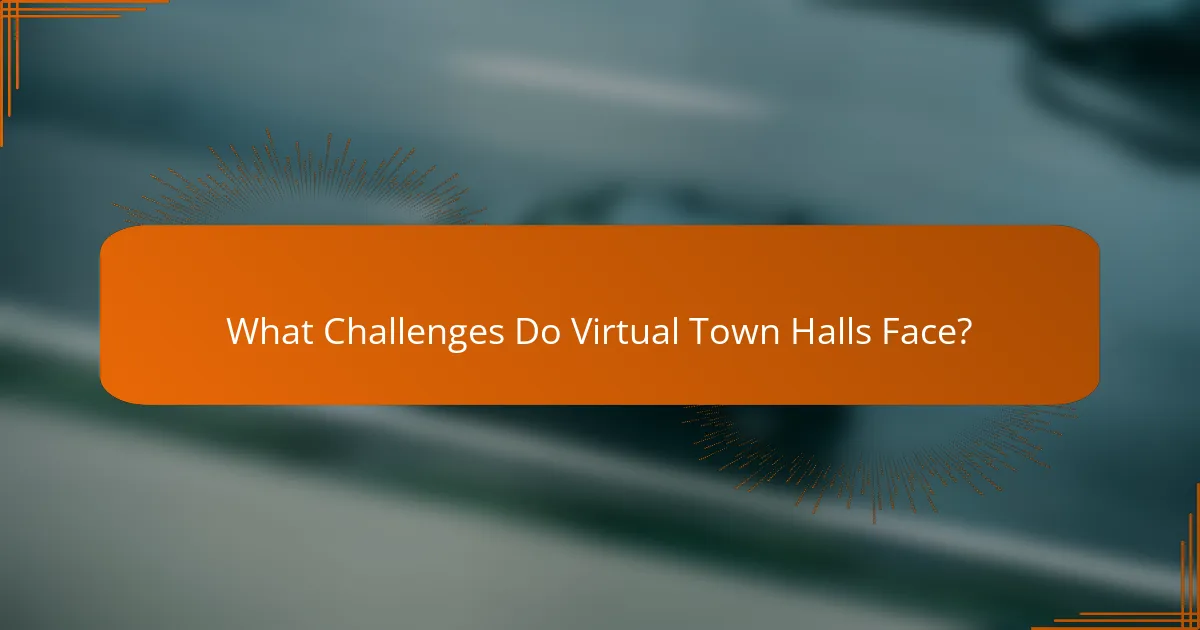
What Challenges Do Virtual Town Halls Face?
Virtual town halls encounter several challenges that can hinder effective communication and participation. Key issues include technical difficulties, engagement fatigue, and ensuring equitable access for all participants.
Technical difficulties and accessibility issues
Technical difficulties often arise during virtual town halls, including connectivity problems and software glitches. These issues can disrupt the flow of the meeting, leading to frustration among participants and officials alike.
Accessibility is another critical concern. Not all citizens have reliable internet access or the necessary devices to participate fully. Ensuring that platforms are user-friendly and compatible with assistive technologies is essential for inclusivity.
Engagement fatigue among participants
Engagement fatigue can significantly impact participation in virtual town halls. As citizens become accustomed to online meetings, they may feel overwhelmed or disinterested, leading to lower attendance and participation rates.
To combat this fatigue, organizers should keep meetings concise and interactive. Incorporating polls, Q&A sessions, and breakout discussions can help maintain interest and encourage active involvement.
Ensuring equitable participation
Equitable participation is vital for the success of virtual town halls. It is crucial to consider the diverse backgrounds of participants, including age, socioeconomic status, and technological proficiency.
Organizers can promote equity by offering multiple ways to engage, such as phone-in options for those without internet access and providing materials in various languages. Additionally, outreach efforts should target underrepresented communities to ensure their voices are heard.
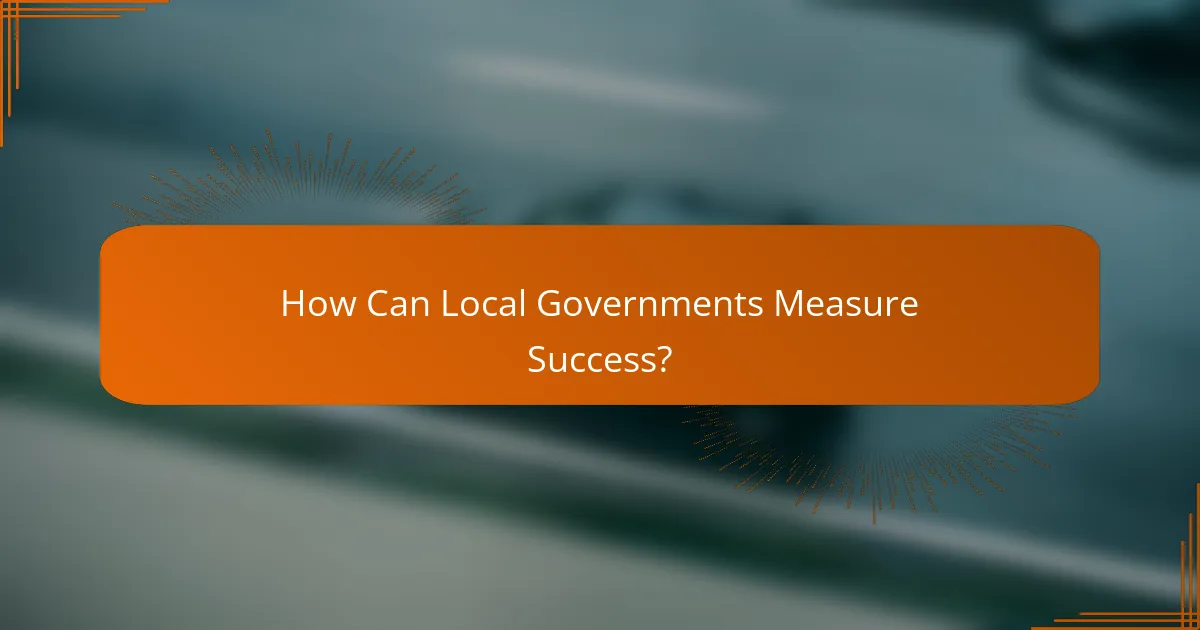
How Can Local Governments Measure Success?
Local governments can measure the success of virtual town halls through various methods that assess citizen engagement and satisfaction. Key indicators include participant feedback and engagement metrics, which provide insights into the effectiveness of these events.
Participant feedback surveys
Participant feedback surveys are essential tools for gauging the success of virtual town halls. These surveys can be distributed immediately after the event and should include questions about the overall experience, clarity of information presented, and areas for improvement.
To maximize response rates, keep surveys concise, ideally under 10 questions, and consider offering incentives such as entry into a raffle. Analyzing the feedback can help identify trends and specific issues that need addressing in future events.
Engagement metrics analysis
Engagement metrics analysis involves examining quantitative data from the virtual town hall, such as attendance numbers, duration of participation, and interaction rates during the event. Metrics like the percentage of attendees who asked questions or participated in polls can provide valuable insights into citizen involvement.
Local governments should track these metrics over time to establish benchmarks and assess improvements. Comparing engagement rates across different events can reveal what formats or topics resonate most with the community, guiding future planning efforts.
